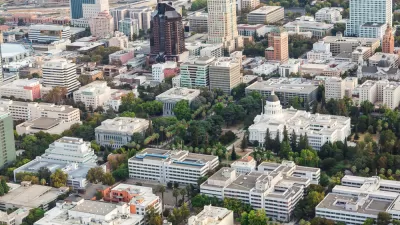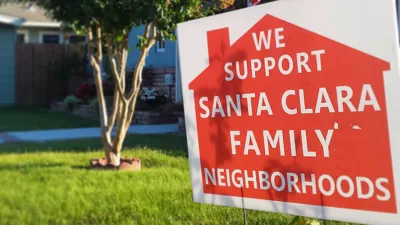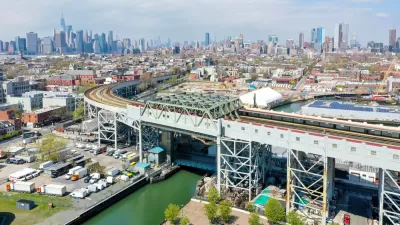A new study calculates the national consequences of restrictive housing regulations in three cities: San Francisco, New York, and San Jose.

Annie Lowrey doesn’t pull any punches in introducing a discussion about the external costs of well-preserved residential neighborhoods: "These neighborhoods are adorable. They are desirable. And they are a total economic disaster."
Lowrey's strongly phrased indictment follows newly released research by Chang-Tai Hsieh of the University of Chicago and Enrico Moretti of the University of California, Berkeley, who study the damage inflicted by constrained housing markets in San Francisco, New York, and San Jose on the larger economy. In other words, the study examines how the growth of cities determines the growth of nations.
And by that measure, the news is not good. According to Lowrey's explanation, the study, "calculates that the United States economy would be nearly 10 percent bigger if just three cities — New York, San Jose, and San Francisco — had loosened their constraints on the supply of housing and let more people in during the past few decades. Let that sink in: 10 percent bigger." That loss is calculated relative to hypothetical conditions imagining those cities with average land use regulations, rather than the highly restrictive regulations that actually exist.
Attentive readers will recall that Timothy B. Lee of Vox picked up news of a discussion draft of the study by Hsieh and Moretti in July 2014. Now the study is complete and made publicly available. Also, at the time, the angle on the study's findings was described differently, focusing on the lost productivity of workers that can't afford to move to cities thanks to the obstruction of NIMBY activists.
FULL STORY: The High Cost of Expensive Townhouses

Pennsylvania Mall Conversion Bill Passes House
If passed, the bill would promote the adaptive reuse of defunct commercial buildings.

World's Largest Wildlife Overpass In the Works in Los Angeles County
Caltrans will soon close half of the 101 Freeway in order to continue construction of the Wallis Annenberg Wildlife Crossing near Agoura Hills in Los Angeles County.

U.S. Supreme Court: California's Impact Fees May Violate Takings Clause
A California property owner took El Dorado County to state court after paying a traffic impact fee he felt was exorbitant. He lost in trial court, appellate court, and the California Supreme Court denied review. Then the U.S. Supreme Court acted.

California Grid Runs on 100% Renewable Energy for Over 9 Hours
The state’s energy grid was entirely powered by clean energy for some portion of the day on 37 out of the last 45 days.

New Forecasting Tool Aims to Reduce Heat-Related Deaths
Two federal agencies launched a new, easy-to-use, color-coded heat warning system that combines meteorological and medical risk factors.

AI Traffic Management Comes to Dallas-Fort Worth
Several Texas cities are using an AI-powered platform called NoTraffic to help manage traffic signals to increase safety and improve traffic flow.
City of Costa Mesa
Licking County
Barrett Planning Group LLC
HUD's Office of Policy Development and Research
Mpact Transit + Community
HUD's Office of Policy Development and Research
Tufts University, Department of Urban and Environmental Policy & Planning
City of Universal City TX
ULI Northwest Arkansas
Urban Design for Planners 1: Software Tools
This six-course series explores essential urban design concepts using open source software and equips planners with the tools they need to participate fully in the urban design process.
Planning for Universal Design
Learn the tools for implementing Universal Design in planning regulations.


























